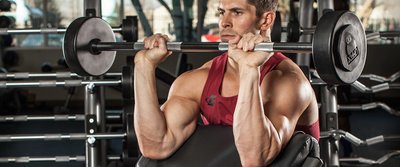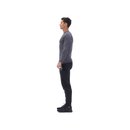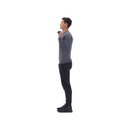If you're farmer, mechanic, baseball player, or any other laborer who completes a lot of physical work with his hands, you probably don't need to read this. Just flex those monster forearms and click on another article. But if your job doesn't involve extensive gripping, pulling, extending, or flexing your wrists, then your forearms probably need some attention.
Strengthening and building your forearms isn't just about aesthetics, although we agree that few things look better than well-developed lower arms in a T-shirt. But strengthening your forearms can also help improve your gripping power on a number of full-body exercises and big movements like heavy back exercises and deadlifts. And who doesn't want to bring up those lifts, too?
Building your forearms, however, is a little more complicated than prescribing three exercises for three sets of 8-10 reps. Like the lower legs, the lower arms require a kitchen-sink approach to training. Unless you have a genetic predisposition for big forearms, you're going to have to throw everything at 'em.
Your Forearms Under the Microscope
Not unlike the calves, the muscle groups in your lower arms—the brachioradialis on the top of your forearm near your elbow, and the group of smaller muscles on the top of your arm near your wrist, collectively known as the wrist extensors; and the muscles on the underside, known as the wrist flexors—have a higher degree of slow-twitch muscle fibers than most of the larger skeletal muscle groups like the quads, hamstrings, and chest.
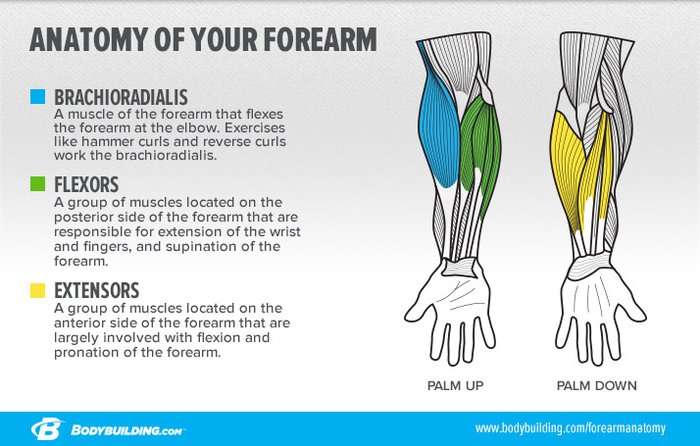
Besides the fact that these muscles are very small, and thus have a limited potential for growth, their higher composition of slow-twitch fibers makes them particularly stubborn to grow.
"The forearms and hand muscles can be rather resilient to fatigue, which suggests type I or type IIa muscle fibers, so they require more attention to cause them to adapt," says Olympic weightlifter and powerlifter Vince Kreipke, MS, CSCS.
Some contend that the gripping involved in various exercises like rows, deadlifts, and shrugs provides enough lower-arm stimulation, but Kreipke argues that, with those exercises, you're holding the bar isometrically—that is, your wrist maintains a near-neutral position throughout the movement—so there's little actual movement taking place at the wrists.
"Remember, when training isometrically, the trained muscle experiences adaptations at only that joint angle, and roughly 20 degrees around that joint angle," he says. "This is why training through a full range of motion is important in any movement. Thus, to get full-range forearm training and build greater size, it's important to train the different movements outside of simple grip training."
Training Your Forearms
Forearm-specific training is the recommended way to fully fatigue the various muscles of the forearm and ensure they're worked through the entire range of motion. After you complete whatever heavy upper-body work you're doing for the day, you can do specific movements for the forearms.
If it's not clear that you should never train your forearms immediately before back or biceps, try it just once and attempt to hold on to a heavy barbell. You probably can't grip it for very long! For this reason, you should train forearms after back or biceps.
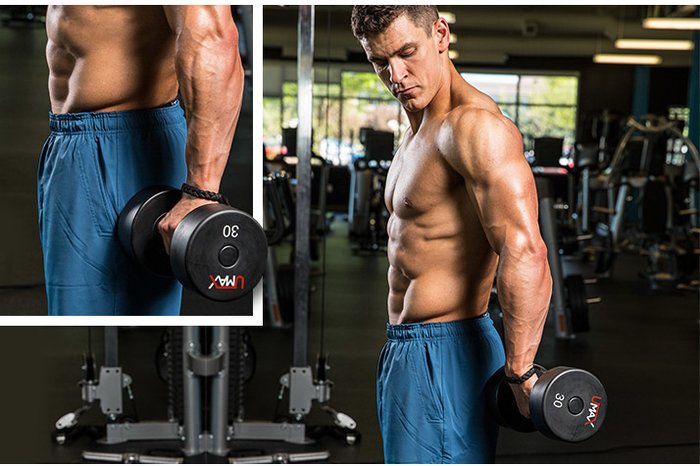
Forearm-specific training is the recommended way to fully fatigue the various muscles of the forearm and ensure they're worked through the entire range of motion.
Only when you fully flex and fully extend at the wrist joint do the smaller forearm muscles get worked actively through their entire range of motion. That means doing wrist curls to target the flexors (on the palm side), and reverse wrist curls to target the extensors (on the opposite side).
Kreipke says there's no need to do complicated movements for the flexors and extensors; simple wrist curls off the end of a bench have been effective since Arnold was training. "You just have to make sure that the wrist is flexing. I normally do this movement off a bench or some sort of support," he says.
However, there's another larger forearm muscle closer to the elbow, the brachioradialis, that wrist-curl movements don't target. Though it isn't engaged during standard biceps curls, it does get worked during neutral-grip movements like hammer curls and overhand-grip exercises like reverse curls.
Get a Grip
Since we're trying to build monster forearms here, we can turn things up a notch with even more techniques.
To build even stronger forearms, Kreipke adds an exaggerated motion to his wrist curls to add grip work to his flexor training. "I like to use a dumbbell and let it roll out into my fingers [on the extension phase]. This allows me to work on my grip as well as working my hand muscles."
Another way to increase the demand on the forearm muscles and grip is to use a thicker bar, whether you're using a barbell or dumbbells. Conventional bars and dumbbells have one-inch handles, but many lifters find that using thicker bars makes the forearms work harder, which provides a greater stimulus to grow stronger and larger.
Thicker handles stimulate more muscle activation in both the hands and arms.
However, you'll find that when you start using a thicker bar, your grip quickly becomes a weak link because you have less mechanical advantage. This limits the overall amount of weight you can use, but over time, training with a fat bar will improve your grip strength on a regular bar considerably!
Thick bars and dumbbell handles aren't available in every gym, but a product like Fat Gripz can be easily placed on top of a bar to more than double its thickness. Try Fat Gripz on regular and forearm-specific exercises like wrist curls, reverse wrist curls, and reverse curls.
The Gritty Details
When it comes to training your forearms directly, Kreipke has three recommendations:
- Perform higher reps: 10-20, with an average of 15 per set
- Take less rest between sets: just enough time to allow the burn to subside, rather than a full minute
- Train them long and hard: 60-plus reps a workout
"The isometric grip work from your other pulling work—assuming you didn't use straps—should give you plenty of work in the higher-intensity range [using heavy weights for lower reps]," Kreipke says.
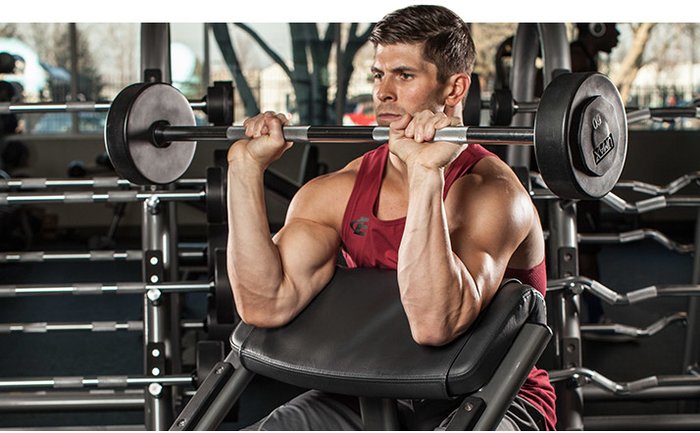
Like other muscle groups that have a greater percentage of slow-twitch muscle fibers, you can also train the forearms more frequently.
"I strongly suggest putting a lot of volume on your forearms if you're going to focus on them as a muscle group," he says. "I'd also suggest supersetting opposing movements—wrist curls and reverse wrist curls—to increase the pump. Either way, you're going to need to blow them up to get size adaptations out of them."
Like other muscle groups that have a greater percentage of slow-twitch muscle fibers, you can also train the forearms more frequently—up to three times per week, provided you don't do them the day before a workout that requires a very strong grip.
Experiment with multiple combinations of sets and reps, as well as various intensity boosters, to see what really is most effective for you. As with calf training, you might have to explore multiple approaches to extract gains that come agonizingly slow. With repetition and time, those incremental gains finally become more substantive.
With this knowledge in your grip, try the simple workout below after you train back or biceps, to put some serious size on your lower arms.

BodyFit
$6.99/month- 2,500+ expert-created single workouts
- 3,500+ how-to exercise videos
- Detailed workout instruction
- Step-by-step workout tips
- Training at gym or at home
- Access to Workout Plans
- Access to Bodyfit App
- Store Discounts
Already have a Bodybuilding.com account with BodyFit? Sign In

What comes with BodyFit?

- Instructional Videos
Don't risk doing a workout improperly! Avoid injury and keep your form in check with in-depth instructional videos.

- How-to Images
View our enormous library of workout photos and see exactly how each exercise should be done before you give it a shot.

- Step-by-Step Instructions
Quickly read through our step-by-step directions to ensure you're doing each workout correctly the first time, every time.
To boost the difficulty of this workout, try supersetting the last two movements, or doing dropsets on the last set of each exercise, reducing the weight by about 25 percent when you reach muscle failure and going to a second point of muscle failure. Don't be afraid to increase workout volume or try other techniques—rest/pause, or even forced reps when doing one arm at a time—to pump up your forearms.
What About Straps?
If you haven't been using straps, Kreipke stresses that your grip strength should improve alongside other strength gains you make in the gym, so you may never need to use them with enough dedicated forearm and grip work.
However, some lifters understandably opt for straps on heavy back or upper-traps days to better grasp the weight in their hands so it doesn't slide out, which can happen for any number of reasons:
- Your hands are sweaty
- The bar surface lacks knurling
- You've got a weak grip
- Your grip is simply fatigued
Straps can certainly help you complete an extra rep or two, which will help spur muscle growth in the body part you're targeting. Of course, the downside is that straps won't help you improve your grip strength. With the plan above, you may be able to get the best of both worlds by training your grip and forearms specifically and using straps when you need them.
Now get in the gym and blow up your bowling pins!


